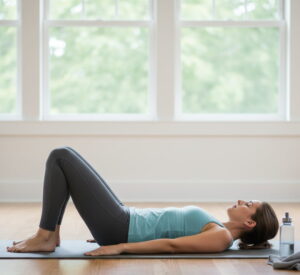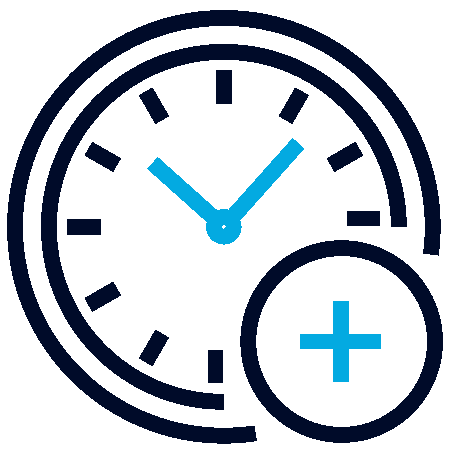Son güncelleme 1 October 2025 by ömer bozdurman
Scoliosis, a condition marked by an abnormal sideways curvature of the spine, can lead to discomfort, limited mobility, and posture challenges. Dr. Ömer Bozduman, an orthopedic specialist, recommends targeted scoliosis exercises to alleviate symptoms, improve posture, and support spinal health. These exercises for scoliosis strengthen core muscles, enhance flexibility, and promote body awareness, helping to straighten the spine and reduce pain. Regular practice of scoliosis treatment exercises can slow curve progression and improve quality of life, as supported by clinical research [1]. Below, we explore the best exercises for scoliosis, including scoliosis physical therapy exercises and scoliosis stretching exercises, tailored to various age groups and needs.
What Are Scoliosis Exercises?
Scoliosis exercises are specialized movements designed to address the unique challenges of spinal curvature. Unlike general workouts, scoliosis physical therapy exercises focus on core stability, spinal elongation, and posture correction to reduce tension and promote symmetry. According to the Scoliosis Research Society, structured programs can significantly improve pain and function in mild to moderate scoliosis cases [2]. These exercises for scoliosis pain target specific areas like the lumbar or thoracic spine, complementing treatments such as bracing or physical therapy. They include stretches for flexibility, strengthening drills for support, and balance exercises to enhance proprioception.
Dr. Bozduman emphasizes tailoring scoliosis treatment exercises to the patient’s specific curve type and severity. For example, sciatica scoliosis exercises may focus on lower back strength to address lumbar scoliosis, while thoracic-focused routines enhance upper spine mobility. A study in Physical Therapy found that targeted exercises for scoliosis can reduce pain by up to 50% in adults [3]. Always consult a healthcare provider to ensure safety, as improper techniques may worsen symptoms.
The Schroth Method: A Specialized Approach
The Schroth Method is a leading physiotherapy technique for scoliosis, focusing on three-dimensional spinal correction. It combines breathing techniques, posture adjustments, and targeted scoliosis exercises to straighten the spine. Developed by Katharina Schroth, this method customizes scoliosis physical therapy exercises to individual curve patterns, such as lumbar or thoracic scoliosis. Research shows that Schroth-based scoliosis treatment exercises can reduce curve angles by 5-10 degrees in adolescents with mild cases [4]. Dr. Bozduman integrates Schroth principles to create personalized plans, especially for patients aiming to avoid surgery.
Scoliosis Exercises by Age Group
Scoliosis exercises are adapted to suit different age groups, addressing unique physical needs for optimal outcomes.
Scoliosis Exercises for Kids
Children diagnosed with scoliosis during growth phases benefit from gentle scoliosis stretching exercises that promote flexibility and core strength without stressing developing spines. Movements like pelvic tilts and balance drills are ideal exercises for scoliosis in kids, supporting posture without overloading joints. A Spine study suggests early intervention with scoliosis treatment exercises can reduce curve progression risk [5]. Supervision ensures correct form, as Dr. Bozduman advises.
Scoliosis Exercises for Adults
Adults with scoliosis, including those with sciatica scoliosis exercises needs, require exercises for scoliosis pain to manage chronic discomfort and muscle imbalances. Core-strengthening movements like planks are effective scoliosis physical therapy exercises to reduce pain and maintain mobility. Evidence indicates that regular best exercises for scoliosis improve quality of life in adults with mild to moderate curves [3].
Scoliosis Exercises for the Elderly
For elderly patients, scoliosis exercises focus on preserving mobility, reducing pain, and preventing falls. Low-impact scoliosis stretching exercises like seated stretches and single-leg balance drills minimize joint stress. A Journal of Geriatric Physical Therapy study highlights that these exercises for scoliosis enhance stability in older adults with spinal deformities [6]. Dr. Bozduman recommends short sessions to build tolerance.
Benefits of Scoliosis Exercises
Scoliosis treatment exercises offer significant benefits, including pain reduction, improved posture, and enhanced spinal stability. Research shows that consistent exercises for scoliosis pain can decrease pain intensity by up to 40% [3]. Strengthening core muscles supports the spine, reducing strain on curved areas, while scoliosis stretching exercises improve flexibility, easing tension. Enhanced proprioception from scoliosis physical therapy exercises helps maintain better alignment during daily activities. Long-term practice of the best exercises for scoliosis may reduce the need for surgery, as supported by the American Academy of Orthopaedic Surgeons [7].
Dr. Bozduman’s Recommended Scoliosis Exercises
Dr. Bozduman suggests the following five evidence-based scoliosis exercises, inspired by programs like CHOC’s scoliosis guide, to manage symptoms effectively. These best exercises for scoliosis include visual descriptions for clarity.
- Pelvic Tilts
Lie on your back with knees bent and feet flat. Tighten your stomach and buttocks to flatten your lower back against the floor. Hold for 5 seconds, breathing normally. Repeat 10 times per set, 2 sets daily. Visual suggestion: A side-view diagram showing a person lying down, with arrows indicating lower back flattening. This sciatica scoliosis exercise strengthens core muscles, reducing lumbar strain [3].

Cat-Camel
On hands and knees, keep abdominals engaged. Inhale, round your back, and relax your neck. Exhale, lower your chest toward the floor, looking slightly upward. Return to neutral. Repeat 10 times per set, 2 sets daily. Visual suggestion: Two side-view images showing rounded and arched back positions. This scoliosis stretching exercise enhances spinal mobility [5].
Double-Leg Abdominal Press
Lie on your back, knees bent, feet flat. Lift legs to a 90° angle at hips and knees. Press hands against knees while pulling knees toward hands, engaging abdominals. Hold for three breaths, repeat 10 times per set, 2 sets daily. Visual suggestion: A sequence of images showing leg lift and hand-knee press. This exercise for scoliosis pain strengthens the core [7].
Single Leg Balance
Stand, lift one knee, and balance on one foot. Use a chair for support initially, then balance independently. Repeat 5 times per side, 1 set daily. Visual suggestion: A front-view image of a person balancing, with a mirror reflecting a straight spine. This scoliosis physical therapy exercise improves proprioception [3].
Plank Exercise
Lie on your stomach, elbows under shoulders, palms flat. Lift into a plank, maintaining a straight line from head to feet. Hold for a few seconds, increasing duration as able. Visual suggestion: A side-view illustration of a plank, highlighting engaged core muscles. This exercise for scoliosis stabilizes the spine [8].
How Often Should You Do Scoliosis Exercises?
Perform scoliosis exercises daily, with sessions lasting 10-15 minutes. Each scoliosis treatment exercise should include 1-2 sets of 5-10 repetitions, adjusted for comfort. Morning or post-activity sessions help reduce stiffness. A Spine study suggests daily exercises for scoliosis for 6-8 weeks can improve posture and reduce pain [5]. If pain worsens, reduce frequency and consult a specialist like Dr. Bozduman.
Things to Consider in Scoliosis Exercises
Proper technique is critical to avoid injury during scoliosis physical therapy exercises. Warm up with light movement and use a mirror to check posture. Combine scoliosis exercises to straighten the spine with rest and, if prescribed, bracing. Monitor for increased pain, which may indicate overexertion. Dr. Bozduman recommends professional guidance, especially for severe curves.
Scoliosis Exercises to Avoid
Avoid high-impact activities like running or jumping, which can strain the spine, particularly in lumbar scoliosis. Deep spinal twists or heavy lifting may worsen curves, as noted in the Journal of Bone and Joint Surgery [9]. Discontinue any exercise for scoliosis pain causing sharp discomfort and seek specialist advice.
References
- Negrini, S., et al. (2018). Physical exercises as a treatment for adolescent idiopathic scoliosis. Scoliosis and Spinal Disorders.
- Scoliosis Research Society. (2023). Non-operative management of scoliosis. SRS.
- Everett, C. R., et al. (2008). Exercise-based treatment for scoliosis. Physical Therapy.
- Schreiber, S., et al. (2015). The effect of Schroth exercises on adolescent scoliosis. Spine.
- Monticone, M., et al. (2014). Active self-correction and exercise for scoliosis. Spine.
- Wong, C., et al. (2019). Balance training for elderly with spinal deformities. Journal of Geriatric Physical Therapy.
- American Academy of Orthopaedic Surgeons. (2022). Scoliosis: Treatment options. OrthoInfo.
- Hicks, G. E., et al. (2005). Core stabilization exercises for spinal health. Journal of Orthopaedic & Sports Physical Therapy.
- Weinstein, S. L., et al. (2013). Health and function of patients with untreated scoliosis. Journal of Bone and Joint Surgery.
By incorporating these best exercises for scoliosis, including sciatica scoliosis exercises and scoliosis stretching exercises, you can effectively manage symptoms and support spinal health under Dr. Bozduman’s expert guidance. Always consult a healthcare professional before starting any scoliosis treatment exercises to ensure they suit your specific condition.



